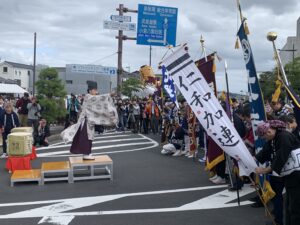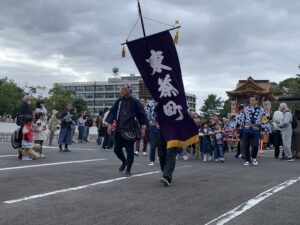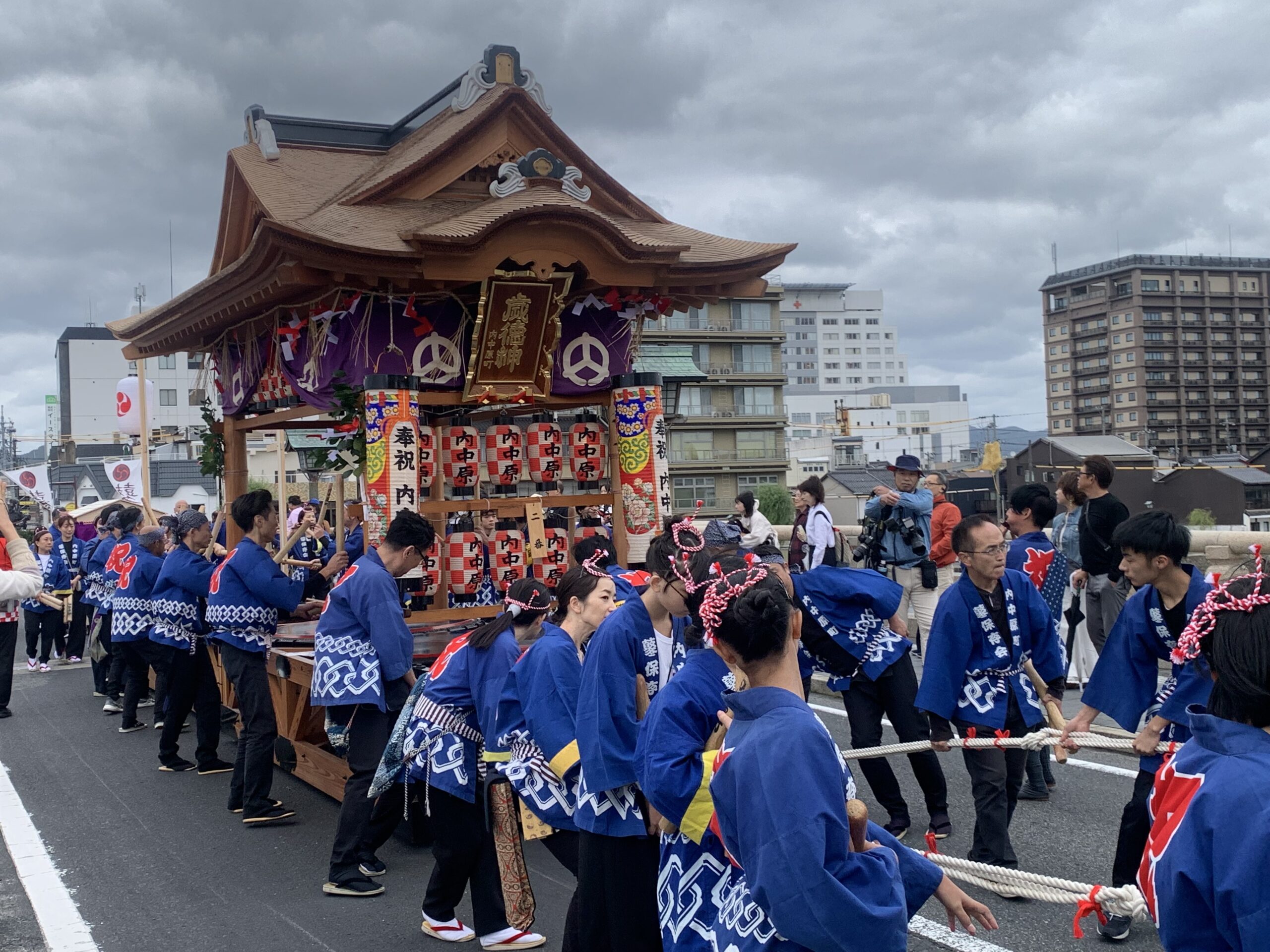Matsue, the capital of Shimane Prefecture, hosted the Dogyoretsu festival on 20th October, attracting visitors from near and far. This Shinto-based event, rooted in over 300 years of history, features teams parading with traditional drums to pray for the city’s prosperity. The festival kicked off with a mayoral address and a Shinto prayer, culminating in vibrant performances at Shirakata Tenmangu Shrine. Dogyoretsu showcases Matsue’s rich cultural heritage, fostering community spirit and connecting generations through music and tradition
Matsue held its annual Dogyoretsu festival on 20th October, welcoming visitors from across Japan and abroad. This centuries-old Shinto-based event, which prays for the city’s prosperity, sees teams parading through the streets while beating Do, large traditional taiko drums.
This year, sixteen drum teams gathered under Matsue’s typically overcast autumn skies near the city’s iconic castle. At 1 p.m., the mayor officially opened the event, followed by a Shinto prayer for the safety of all participants. Spectators were treated to rice cakes and sacred sake while the skilful Do Yu Kai (drum lovers’ team) performed a sacred rhythmical Shinto melody called Orochi, bringing the crowd together in a festive and unifying atmosphere.

Access to Matsue
Getting to Matsue is convenient, with several travel options available. From Tokyo, the luxurious Sunrise Izumo sleeper train offers a 12-hour journey with private cabins, costing around ¥50,000 for a round trip. Take the Bullet Train to Okayama Station for a quicker journey, then transfer to the Yakumo Limited Express, reaching Matsue in about eight hours for under ¥40,000. If you prefer flying, there’s a 90-minute flight from Tokyo to Izumo Airport and a 30-minute bus ride into the city. Rental cars are also available near the station and airport, offering flexibility for travellers.
A Tradition with Deep Historical Roots
The parade was led by Higashi-Chamachi, a traditional commercial district and historical neighbourhood. Higashi Chamachi and 15 other teams marched 1.8 kilometres to Shirakata Tenmangu Shrine, retracing a route once taken by Matsue’s lords on their journeys to Edo, modern-day Tokyo, during the Edo Period. The drummers delivered especially vibrant Shagiri and Mitamita melodies on Ohashi Bridge, a site made famous by Irish writer Lafcadio Hearn in his memoir Glimpses of Unfamiliar Japan. Upon reaching the shrine, the teams offered their drumming as a religious tribute to the shrine’s deity.

‘I watched the practice yesterday, and today’s event has truly uplifted the community spirit’, remarked Michel Bernardo, a traveller from Switzerland. ‘It has left me with a very positive impression of Matsue’.
Over 300 Years of Tradition
The origins of the Dogyoretsu festival can be traced back more than 300 years. Initially, individual districts in Matsue held separate drum celebrations, but after the Meiji Period (1868–1912), the festivities were unified to honour Emperor Meiji’s birthday on 3rd November. It is believed that portable shrines (mikoshi) were carried until the Meiji Period, but by the Taisho Period (1912–1926), floats were introduced to celebrate the ascension of Emperor Taisho. The festival is now a prayer for Matsue’s prosperity rather than an imperial tribute.
Since 2006, Dogyoretsu has been held annually on the third Sunday of October, attracting participants of all ages and nationalities. This year’s parade featured 16 teams from the 31 registered in Matsue, with participants representing neighbourhood associations and local clubs. Each team paraded with large wooden drum floats adorned with images of Shinto deities. In keeping with the festival’s traditional roots, prayers were offered for peace, a bountiful harvest, and good fishing.
Pride of the Community: The Drum Teams
Teams consist of 60 to 120 members, with children and adults taking turns pulling the floats and playing the drums throughout the parade. Additional musicians played bamboo flutes and small cymbals (changara), adding rhythmic complexity to the performances. Membership in the drum teams is considered an honour, and extensive preparation is required to master each team’s unique drum rhythms.
Dogyoretsu remains a cornerstone of Matsue’s cultural heritage, bringing together families across generations and fostering a strong sense of community.
(Words by Takashi Saito)

